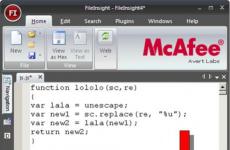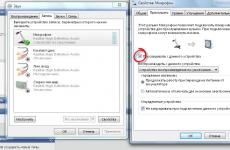Transfer of the relics of St. Nicholas, Archbishop of Myrlikia, miracle worker. Celebration of the transfer of the relics of St. Nicholas, Archbishop of Mirlikia, miracle worker, - patronal feast of the Trinity-Sergius Lavra
This holiday is celebrated for the Konstantin-Eleninsky convent, one of the temples of which is dedicated to St. Nicholas.
The abbess of the monastery, Abbess Hilarion (Feoktistova) and her sisters went to Bari to honor the memory of the great saint and for a prayer service at the resting place of his holy relics.
Troparion of St. Nicholas, Tone 4:The day is bright, the blessing of celebration, / the city of Barsky rejoices, / and with it the whole universe rejoices / with songs and spiritual stumps: / today is a sacred celebration / in the presentation of honest and multifunctional relics / of the saint and miracle worker Nicholas, / as the sun is unsettled, ascending with radiant rays, / dispelling the darkness of temptations and troubles / from the crying is true: // save us, as our representative, the great Nicholas.
 In Konstantino-Eleninsky nunnery one of the churches is dedicated to St. Nicholas, there is also a part of his holy relics and a wonderful icon with his image, and the walls are decorated with paintings that tell about the deeds of St. Nicholas. A small, cozy and, as they say, a prayer temple.
In Konstantino-Eleninsky nunnery one of the churches is dedicated to St. Nicholas, there is also a part of his holy relics and a wonderful icon with his image, and the walls are decorated with paintings that tell about the deeds of St. Nicholas. A small, cozy and, as they say, a prayer temple.
The Legend of the Transfer of the Relics of St. Nicholas, Archbishop of Mirlikia
(Based on the Lives of the Saints of St. Demetrius of Rostov)
 In the summer of 1087, during the reign of the Greek Tsar Alexy Comnenus and the Patriarch of Constantinople Nicholas Grammar, during the reign of Vsevolod Yaroslavich in Kiev and his son Vladimir Vsevolodovich Monomakh in Chernigov, the Ishmaelites invaded the Greek region, both from that and the other side of the sea ... They went through all the cities and villages, ... butchered men, but women and children were taken prisoner and burned houses and property. Churches and monasteries were deserted. Then the Lycian Worlds were devastated, in which the body of St. Nicholas rested, a precious and honorable body that worked wondrous and glorious miracles ... But our Lord Jesus Christ could not allow the relics of the saint to rest in a desolate place and not be glorified by anyone , according to the words of the Scripture: “let the saints triumph in glory” (Psalm 149: 5); and again: "Glory shall be to all His saints" (Psalm 149: 9).
In the summer of 1087, during the reign of the Greek Tsar Alexy Comnenus and the Patriarch of Constantinople Nicholas Grammar, during the reign of Vsevolod Yaroslavich in Kiev and his son Vladimir Vsevolodovich Monomakh in Chernigov, the Ishmaelites invaded the Greek region, both from that and the other side of the sea ... They went through all the cities and villages, ... butchered men, but women and children were taken prisoner and burned houses and property. Churches and monasteries were deserted. Then the Lycian Worlds were devastated, in which the body of St. Nicholas rested, a precious and honorable body that worked wondrous and glorious miracles ... But our Lord Jesus Christ could not allow the relics of the saint to rest in a desolate place and not be glorified by anyone , according to the words of the Scripture: “let the saints triumph in glory” (Psalm 149: 5); and again: "Glory shall be to all His saints" (Psalm 149: 9).
In the city of Bari, which then belonged to the Normans, there lived a certain presbyter, Christ-loving and righteous. Saint Nicholas appeared to him in a dream and said: “Go and tell the citizens and the entire church cathedral to go to the city of Myra, take me from there and put me here, for I cannot stay there, in a devastated place. This is the will of the Lord. "
Having said this, the saint became invisible. When he woke up in the morning, the presbyter recounted his vision to everyone. They rejoiced and said: "Now the Lord has magnified His mercy on His people and on our city, for He has vouchsafed us to receive His saint, Saint Nicholas."
Immediately they chose from among their midst men reverent and God-fearing and sent them in three ships for the relics of the saint.
Having sailed to Antioch, ... they learned that the Venetians, who were there, wanted to warn them and take the relics of St. Nicholas. Immediately the gentlemen set off with haste, arrived at Myra in Lycia and landed at the city's pier.
Having conceived a matter of saving themselves and their city, they armed themselves and entered the church of St. Nicholas. Here they saw four monks and asked them where the relics of St. Nicholas rest. They showed them the site of the crayfish. The barians dug up the church platform and found a shrine full of peace. They poured Miro into a vessel, and took the relics of the saint and carried it to the ship, then sailed away. Two monks remained in Mira, and two accompanied the relics of St. Nicholas. They departed from the city of Mir in the month of April on the 11th day, and arrived in the city of Bari in the month of May on the 9th day, on Sunday evening.
 Seeing that they had arrived from the city of Mir with the relics of St. seas.
Seeing that they had arrived from the city of Mir with the relics of St. seas.
Many miracles were performed here by the relics of the saint. And they brought many gifts to the saint. Seeing his glorious miracles, the citizens were filled with great joy, built a great and beautiful church in the name of St. Nicholas the Wonderworker, and forged a gilded silver shrine for his relics. In the third summer, after the transfer of the relics from Myra in Lycia, at the request of the inhabitants of Bari, Pope Urban arrived in the city with his bishops and with all the clergy of the church to transfer the relics of St. Nicholas. They put the relics of the saint in a silver shrine, then the bishops and nobles transferred it to the new church and laid it in the altar, in the month of May on the 9th day. They also transferred the old tomb of the saint, in which he was brought from Mir, put the tomb in the church and put in it part of the hand from the relics of the saint. Many people came and worshiped the saint, kissing his relics and the shrine. Pope Urban, the bishops and all citizens created on that day a great feast and glorification of the saint, which they continue to this day.
On May 22, the Orthodox Church established a celebration in honor of St. Nicholas the Wonderworker, or rather, in honor of the transfer of his pious relics from Myra in Lycia to Bar. It should be noted that the holiday was not celebrated everywhere at once.
Annual Celebration Celebration
For the first few decades, the celebration of the event did not go outside the Italian town called Bar, but a little later, the holiday was spread throughout Italy. After the establishment of the celebration of the transfer of the relics of Nicholas in Italy, several decades later, an annual celebration of the event was established in other countries. Today, believers are encouraged to visit the temple to participate in worship and pray before miraculous icon Nicholas the Wonderworker. The icon promotes healing from physical and mental ailments, and also provides an opportunity to atone for their own sins and take the right path.
The historical past of the relics of Nicholas the Wonderworker
Based on the nickname of Saint Nicholas, during his life it really happened a large number of miracles. That's why, life path his was truly special, as the man helped to heal many believers suffering from all kinds of diseases. At the end of his earthly life, the relics of the saint were carefully preserved by the parishioners. But, as the story goes, in the middle of the ninth century reigned Time of Troubles- constant military raids, desecration of shrines by Turkish robbers, as well as the destruction of churches and temples. At the beginning of 792, the ruler of powerful Turkey, Aaron Al-Rashid, decided to desecrate the relics of Nicholas the Wonderworker, but at that moment the same thing happened great miracle, which is associated with this relic. The enemy ships that sailed to the island of Rhodes were completely destroyed. The fact is that the once calm sea surface became stormy, the sky was covered with clouds, and a strong storm began, which sank all the enemy ships.
The power of the relics of St. Nicholas
People did not immediately believe that the relics of Nicholas the Wonderworker had miraculous powers. But, after the sinking of the ships of the Turkish army, Christians realized that the shrine is more powerful than it seems at first glance. After the transfer of the relics from the Lycian World to the Italian city of Bar, people began to pray in front of the shrine, and were surprised at its incredible power. If the prayer was sincere, filled with love for the Lord God, then a person most often received a grace-filled deliverance from ailments, both physical and mental. Also, those believers who want to receive forgiveness from their relatives and friends, or to protect them from the evil designs of the enemy, pray to the icon of St. Nicholas the Wonderworker. But we must remember that miraculous power will manifest itself only if the prayer was uttered with a good intention to really help your neighbor.
Saint Nicholas the Wonderworker, whose relics have recently visited Russia, was born in 270 A.D. The birthplace of the future saint is the town of Patara, which was located in Asia Minor, in the region of Lycia. In those days it was a Greek colony, and now it is the territory of Turkey.
Theophanes and Nonna were childless for a long time. And when they had a son, the religious parents made a vow that he would devote his life to serving God. The child was named Nicholas - the name means "the winner of the nations." Having enlisted the support of God, Nicholas devoted himself to the fight against evil, and justified his name.
 From birth, the saint began to perform miracles. At first healed his seriously ill mother... Then, when, while still an infant, he independently stood on his feet for three whole hours in the font, thus giving praise to the Holy Trinity. According to legend, he drank even his mother's milk, observing the fast, only once in the evening.
From birth, the saint began to perform miracles. At first healed his seriously ill mother... Then, when, while still an infant, he independently stood on his feet for three whole hours in the font, thus giving praise to the Holy Trinity. According to legend, he drank even his mother's milk, observing the fast, only once in the evening.
As a child, the future Saint devoted a lot of time, later becoming a reader, and then a priest in the church, the rector of which was Bishop Nicholas of Patarsky, who was his uncle. Saint Nicholas did not like idle pastime with friends, and generally avoided women. His parents had a fortune and, to the best of their ability, helped the hungry and disadvantaged. After their death, St. Nicholas gave everything that was left to the poor. He himself continued to serve in the church.
Nikolai consciously endured hardships all his life, rejected all sorts of benefits, led a monastic way of life, and even ate once, in the evening. He devoted himself entirely to the service of God. And people. He became an archbishop in the town of Myra, now it is called Demre. This is in Turkey, Antalya province.
And being on the throne of the bishop , began to patronize all the poor and disadvantaged... In those difficult times, the persecution of Christians by the Roman emperors continued, although already weaker. One of them, Diocletian, also imprisoned Saint Nicholas, but even there he continued to preach and take care of the prisoners.
Despite his kindness and humility, he was a true warrior of the church. Throughout the city, he destroyed idols and pagan temples. At the First Ecumenical Council held in Nicaea in 325, he exposed the Archbishop of Lycia Arius for his heretical teaching and even slapped him for blasphemy. Nicholas the Wonderworker lived to a ripe old age and quietly passed away on December 19, 345 AD. His relics were placed with all honors in the cathedral church of the city of Myra.
The relics of Nicholas the Wonderworker
And after his death, Nicholas the Wonderworker remains the benefactor of the human race. God endowed his body with incorruptibility and miraculous power... Nicholas the Pleasant exudes healing myrrh. People to this day continue to go to him for miraculous healing of both physical and mental ailments. The relics of the saint were kept in Mir for hundreds of years, until they were transferred to Italy.
Transfer of the relics of St. Nicholas to Bari
 More than 700 years later, Lycia was destroyed. The same fate befell the temple where the tomb of the Pleasant of God was located. The ruins remained under the protection of several faithful monks. In 1087, in a dream, appeared before an Italian priest from Apulia Nicholas the Wonderworker and ordered to transport his relics to the city of Bari. For this, the clergy and residents of Bari equipped three ships.
More than 700 years later, Lycia was destroyed. The same fate befell the temple where the tomb of the Pleasant of God was located. The ruins remained under the protection of several faithful monks. In 1087, in a dream, appeared before an Italian priest from Apulia Nicholas the Wonderworker and ordered to transport his relics to the city of Bari. For this, the clergy and residents of Bari equipped three ships.
The Venetians intended to get ahead of them in order to seize the relics of St. Nicholas and send them to Venice. Therefore, the ships left under the guise of merchant ships to lull the vigilance of their pursuers. The ships went in a roundabout way. On the way, they entered the ports of Egypt and Palestine, traded as if they were merchants.
Meanwhile, scouts were sent to Lycia, who reported that the guard of the tomb consisted of only four old monks. But they could not find out the exact location. Upon arrival in Mira, the lords wanted to bribe the guards, but they did not give out the location of the tomb even for 300 gold coins. And only under the threat of torture, one of the monks indicated the place of burial. The tomb, made of white marble, is perfectly preserved. When it was opened, they found in it the relics of Nicholas, immersed in fragrant myrrh, which filled the tomb to the very edges.
They could not take the whole tomb, it turned out to be very large and heavy. Therefore, they put the relics into the ark, which they had brought with them, and set off on the return journey. They sailed for 20 days and on May 22 they reached Bari. The meeting of the shrine was very solemn. The whole city gathered, led by the clergy. During the transfer of the relics to the church of St. Eustathius, many miraculous healings took place, thereby further awakening faith and sacred awe for the great saint. After 2 years, a new temple was built, and the relics of the saint were transferred by Pope Urban II to the crypt located at the bottom of the temple. It happened on October 1, 1089.
May 22 - the day of the transfer of the relics of St. Nicholas to Bari
 The day when the relics Saint Nicholas were moved to the city of Bari, became a real holiday in honor of Nikolai the Pleasant. At first, it was celebrated only in the city of Bari. For the Greek Church, the loss of the relics of the saint was a great loss and she did not make this day a holiday. The Russian Orthodox Church also celebrates this day since 1087.
The day when the relics Saint Nicholas were moved to the city of Bari, became a real holiday in honor of Nikolai the Pleasant. At first, it was celebrated only in the city of Bari. For the Greek Church, the loss of the relics of the saint was a great loss and she did not make this day a holiday. The Russian Orthodox Church also celebrates this day since 1087.
In the Russian folk calendar, two holidays are dedicated to Nicholas the Wonderworker: on December 19, Nicholas in winter is celebrated, and on May 22, Nicholas in spring. In Russia, this is the most revered saint, whom even people far from religion know. The image of the wonderworker, his deeds and protection of ordinary and poor people, his mercy and forgiveness inspire in Orthodox people faith and give hope for his help.
Location of the relics of St. Nicholas
 Today the relics of the saint are kept in catholic church(basilica) in Bari, built especially for this. Nevertheless, most of the pilgrims to Bari, even before the revolution, came from Orthodox Russia, where Nikolai the Ugodnik was deeply revered. And so in 1911 it was decided to open in Bari Orthodox church.
Today the relics of the saint are kept in catholic church(basilica) in Bari, built especially for this. Nevertheless, most of the pilgrims to Bari, even before the revolution, came from Orthodox Russia, where Nikolai the Ugodnik was deeply revered. And so in 1911 it was decided to open in Bari Orthodox church.
All around Russia collected money for the construction of the temple... The relics of Nicholas the Wonderworker still exude myrrh. The priests collect myrrh once a year, on May 22, on the feast of St. Nicholas in spring, dilute it with holy water, and then pilgrims deliver it all over the world. In all parts of the world, believers receive healing of physical and spiritual ailments from the sacred oil.
The relics of Nicholas the Wonderworker in Venice
The holy remains were very fragile and small, and therefore the nobles in a hurry lost many fragments. Later, during the Crusades, they were found and brought to Venice. The relics were placed in a church built on the island of Lido in 1044 and consecrated in honor of Nicholas the Wonderworker. Thus, Venice is a third of all the relics of St. Nicholas... But most of them still belong to Italy. The Church of St. Nicholas the Wonderworker in Venice is visited by a lot of pilgrims from all over the world who come to pray to the shrine and receive help.
The relics of St. Nicholas in Moscow
 On May 21, 2017, the relics of Nicholas the Wonderworker were taken from Italy to Russia. The relics have not left Italy for the last 930 years. Patriarch Kirill agreed on this with Pope Francis in February 2016. The left ninth rib of the Saint was brought to Moscow in a special capsule made of precious metal with protected glass.
On May 21, 2017, the relics of Nicholas the Wonderworker were taken from Italy to Russia. The relics have not left Italy for the last 930 years. Patriarch Kirill agreed on this with Pope Francis in February 2016. The left ninth rib of the Saint was brought to Moscow in a special capsule made of precious metal with protected glass.
This rib is closest to the heart and is considered the focus of faith. During 53 days (May 22 - July 12) being in Moscow, to bow to the relics and touch them, almost 2 million people came to the Cathedral of Christ the Savior. People came not only from other cities but also the nearest countries. Neither bad weather nor long queues scared anyone. It was like a pilgrimage.
The relics of St. Nicholas in St. Petersburg
From Moscow, from the Cathedral of Christ the Savior, the relics of St. Nicholas were transported to St. Petersburg. It was possible to attach to them from 13 to 27 July 2017 in the Holy Trinity Alexander Nevsky Lavra. On July 28, a solemn farewell took place and the relics were again sent to Bari.
Holidays dedicated to Nicholas the Wonderworker
- December 19 - the day of the death of St. Nicholas;
- May 22 - the day of the transfer of the relics to Italy.
What they pray to Nikolai the Ugodnik
- about those who are on the way (the Saint himself pacified the storm with prayer when he sailed on the sea);
- about a prosperous marriage for a daughter (the Saint gave a dowry to the daughters of a ruined man);
- about salvation from hunger (St. Nicholas during his lifetime tried on the enemies and defended the innocent);
- you can pray in a difficult life situation like any other saint.
Alexander Nevsky Lavra
The Nevsky Monastery was founded in 1710 by Peter the First, dedicating it to Saint Prince Alexander and his famous battle on the Neva (in this place) with the Swedes in 1240. It was officially founded on March 25, 1713, on the day of the Annunciation. Holy Mother of God... By order of Peter on September 12, 1724, the relics of Alexander Nevsky were solemnly transferred here from Vladimir.
The Italian architect Trezzini was planning a large stone ensemble, but the construction dragged on and a whole town with houses and courtyards grew up near it. A school was opened for the children of priests. Subsequently, it became a seminary, and then an academy. The bulk of the construction work fell on the reign of Elizabeth Petrovna and Catherine II. In 1797, Paul I awarded her the status of a laurel. The remains of many great people of Russia are buried here. All gravestones and monuments are of great historical value.
In the 11th century, the Greek Empire experienced hard times... The Turks devastated her possessions in Asia Minor, ravaged cities and villages, killing their inhabitants, and accompanied their cruelties by insulting holy temples, relics, icons and books. Muslims attempted to destroy the relics of St. Nicholas, who was deeply revered by the entire Christian world.
In 792, Caliph Aaron Al-Rashid sent the chief of the fleet, Humeid, to plunder the island of Rhodes. Having devastated this island, Humeid went to Myra in Lycia with the intention of breaking open the tomb of St. Nicholas. But instead, he broke into another, which stood next to the tomb of the saint. As soon as the blasphemers had time to do this, a terrible storm arose at sea and almost all the ships were defeated.
The desecration of shrines angered not only Eastern, but also Western Christians. Particularly feared for the relics of St. Nicholas were Christians in Italy, among whom there were many Greeks. The inhabitants of the city of Bar, located on the shores of the Adriatic Sea, decided to save the relics of St. Nicholas.
In 1087 the merchants of the lord and Venetian went to Antioch to trade. Both those and others proposed on the way back to take the relics of St. Nicholas and transport them to Italy. In this intention, the inhabitants of Bar were ahead of the Venetians and were the first to land in Mira. Two people were sent ahead, who, upon returning, reported that everything was quiet in the city, and in the church, where the greatest shrine rests, they met only four monks. Immediately 47 people, armed, went to the church of St. Nicholas, the watchman monks, suspecting nothing, showed them the platform under which the saint's tomb was hidden, where, according to custom, foreigners were anointed with myrrh from the relics of the saint. At the same time, the monk told about the appearance on the eve of Saint Nicholas to an elder. In this vision, the Saint ordered to keep his relics more carefully. This story inspired the nobles; they saw for themselves in this phenomenon the permission and, as it were, the instruction of the Holy One. To facilitate their actions, they revealed their intentions to the monks and offered them a ransom - 300 gold coins. The watchmen refused the money and wanted to notify the residents of the misfortune that threatened them. But the aliens tied them up and put their watchmen at the door. They broke the church platform, under which there was a tomb with relics. In this matter, the young man Matthew was distinguished by special zeal, who wanted to discover the relics of the saint as soon as possible. In impatience, he broke the lid and the gentlemen saw that the sarcophagus was filled with fragrant holy peace. The compatriots of the nobles, presbyters Lupp and Drogo, performed a litiya, after which the same Matthew began to extract the relics of the saint from the overflowing sarcophagus of the sarcophagus. This took place on April 20, 1087.
Due to the absence of the ark, presbyter Drogo wrapped the relics in outerwear and, accompanied by the nobles, carried them to the ship. The freed monks told the city the sad news of the abduction of the miracle worker's relics by foreigners. Crowds of people gathered on the shore, but it was too late ...
On May 8, the ships arrived at Bar, and soon the good news spread throughout the city. The next day, May 9, the relics of St. Nicholas were solemnly transferred to the Church of St. Stephen, which was not far from the sea. The celebration of the transfer of the shrine was accompanied by numerous miraculous healings of the sick, which aroused even greater reverence for the great saint of God. A year later, a church was built in the name of St. Nicholas and consecrated by Pope Urban II.
The event connected with the transfer of the relics of St. Nicholas caused a special veneration of the Wonderworker and was marked by the establishment of a special holiday on May 9. At first, the feast of the transfer of the relics of St. Nicholas was celebrated only by the inhabitants of the Italian city of Bar. In other countries of the Christian East and West, it was not accepted, despite the fact that the transfer of the relics was widely known. This circumstance is explained by the custom of honoring mainly local shrines characteristic of the Middle Ages. In addition, the Greek Church did not establish the celebration of this memory, because the loss of the relics of the saint was a sad event for her.
Russian Orthodox Church the celebration of the memory of the transfer of the relics of St. Nicholas from Myra in Lycia to Bar on May 9 was established shortly after 1087 on the basis of the deep, already established veneration by the Russian people of the great saint of God, who passed from Greece simultaneously with the adoption of Christianity. The glory of the miracles shown by the saint on earth and at sea was widely known to the Russian people. Their inexhaustible strength and abundance testify to a special blessed help great saint to suffering humanity. The image of the Saint, the all-powerful Wonderworker-benefactor, became especially dear to the heart of the Russian people, because he instilled deep faith in him and hope for his help. Countless miracles have marked the faith of the Russian people in the inexhaustible help of the Pleasant of God.
Significant literature about him was compiled very early in Russian writing. Legends about the miracles of the saint, performed on the Russian land, began to be written in ancient times. Soon after the transfer of the relics of St. Nicholas from Myra in Lycia to Bargrad, a Russian version of the life and story of the transfer of his holy relics, written by a contemporary of this event, appeared. Even earlier, the word was written praiseworthy to the Wonderworker. Every week, every Thursday, the Russian Orthodox Church especially honors his memory.
Numerous churches and monasteries were erected in honor of Saint Nicholas, Russian people called their children after him at Epiphany. Numerous miraculous icons great saint. The most famous among them are the images of Mozhaisky, Zaraisky, Volokolamsky, Ugreshsky, Ratny. There is not a single house and not a single church in the Russian Church that does not contain the image of St. Nicholas the Wonderworker. The meaning of the grace-filled intercession of the great saint of God is expressed by the ancient compiler of the life, according to whom Saint Nicholas “do many great and glorious miracles on earth and on the sea, helping those in trouble and saving from drowning, and from the depths of the sea to dry wear, bringing to the house, delivering from bonds and dungeons, interceding from the sword-crossing and freeing from death, many will be given healing for many: blind sight, lame walking, hearing deaf, dumb verb. Many in poverty and poverty are the last suffering to get rich, food is smooth and for every need, a ready helper, a warm intercessor and quick intercessor and protector appeared, and helps those who call him and rescues him from troubles. The message of this great Wonderworker East and West and all the ends of the earth lead his miracles. "
In the 11th century, the Greek Empire was going through a difficult time. The Turks devastated her possessions in Asia Minor, ravaged cities and villages, killing their inhabitants, and accompanied their cruelties by insulting holy temples, relics, icons and books. Muslims attempted to destroy the relics of St. Nicholas, who was deeply revered by the entire Christian world.
In 792, Caliph Aaron Al-Rashid sent the chief of the fleet, Humeid, to plunder the island of Rhodes. Having devastated this island, Humeid went to Myra in Lycia with the intention of breaking open the tomb of St. Nicholas. But instead, he broke into another, which stood next to the tomb of the saint. As soon as the blasphemers had time to do this, a terrible storm arose at sea and almost all the ships were defeated.
The desecration of shrines angered not only Eastern, but also Western Christians. Particularly feared for the relics of St. Nicholas were Christians in Italy, among whom there were many Greeks. The inhabitants of the city of Bar, located on the shores of the Adriatic Sea, decided to save the relics of St. Nicholas.
In 1087 the merchants of the lord and Venetian went to Antioch to trade. Both those and others proposed on the way back to take the relics of St. Nicholas and transport them to Italy. In this intention, the inhabitants of Bar were ahead of the Venetians and were the first to land in Mira. Two people were sent ahead, who, upon returning, reported that everything was quiet in the city, and in the church, where the greatest shrine rests, they met only four monks. Immediately 47 people, armed, went to the church of St. Nicholas, the watchman monks, suspecting nothing, showed them the platform under which the saint's tomb was hidden, where, according to custom, foreigners were anointed with myrrh from the relics of the saint. At the same time, the monk told about the appearance on the eve of Saint Nicholas to an elder. In this vision, the Saint ordered to keep his relics more carefully. This story inspired the nobles; they saw for themselves in this phenomenon the permission and, as it were, the instruction of the Holy One. To facilitate their actions, they revealed their intentions to the monks and offered them a ransom - 300 gold coins. The watchmen refused the money and wanted to notify the residents of the misfortune that threatened them. But the aliens tied them up and put their watchmen at the door. They broke the church platform, under which there was a tomb with relics. In this matter, the young man Matthew was distinguished by special zeal, who wanted to discover the relics of the saint as soon as possible. In impatience, he broke the lid and the gentlemen saw that the sarcophagus was filled with fragrant holy peace. The compatriots of the nobles, presbyters Lupp and Drogo, performed a litiya, after which the same Matthew began to extract the relics of the saint from the overflowing sarcophagus of the sarcophagus. This took place on April 20, 1087.
In the absence of the ark, presbyter Drogo wrapped the relics in outer clothing and, accompanied by the nobles, carried them to the ship. The freed monks told the city the sad news of the abduction of the miracle worker's relics by foreigners. Crowds of people gathered on the shore, but it was too late ...
On May 8, the ships arrived at Bar, and soon the good news spread throughout the city. The next day, May 9, the relics of St. Nicholas were solemnly transferred to the Church of St. Stephen, which was not far from the sea. The celebration of the transfer of the shrine was accompanied by numerous miraculous healings of the sick, which aroused even greater reverence for the great saint of God. A year later, a church was built in the name of St. Nicholas and consecrated by Pope Urban II.
The event connected with the transfer of the relics of St. Nicholas caused a special veneration of the Wonderworker and was marked by the establishment of a special holiday on May 9. At first, the feast of the transfer of the relics of St. Nicholas was celebrated only by the inhabitants of the Italian city of Bar. In other countries of the Christian East and West, it was not accepted, despite the fact that the transfer of the relics was widely known. This circumstance is explained by the custom of honoring mainly local shrines characteristic of the Middle Ages. In addition, the Greek Church did not establish the celebration of this memory, because the loss of the relics of the saint was a sad event for her.
The Russian Orthodox Church commemorated the transfer of the relics of St. Nicholas from Myra in Lycia to Bar on May 9 shortly after 1087 on the basis of the deep, already established veneration by the Russian people of the great saint of God, who passed from Greece simultaneously with the adoption of Christianity. The glory of the miracles shown by the saint on earth and at sea was widely known to the Russian people. Their inexhaustible strength and abundance testify to the special grace-filled help of the great saint to suffering humanity. The image of the Saint, the all-powerful Wonderworker-benefactor, became especially dear to the heart of the Russian people, because he instilled deep faith in him and hope for his help. Countless miracles have marked the faith of the Russian people in the inexhaustible help of the Pleasant of God.
In contact with






